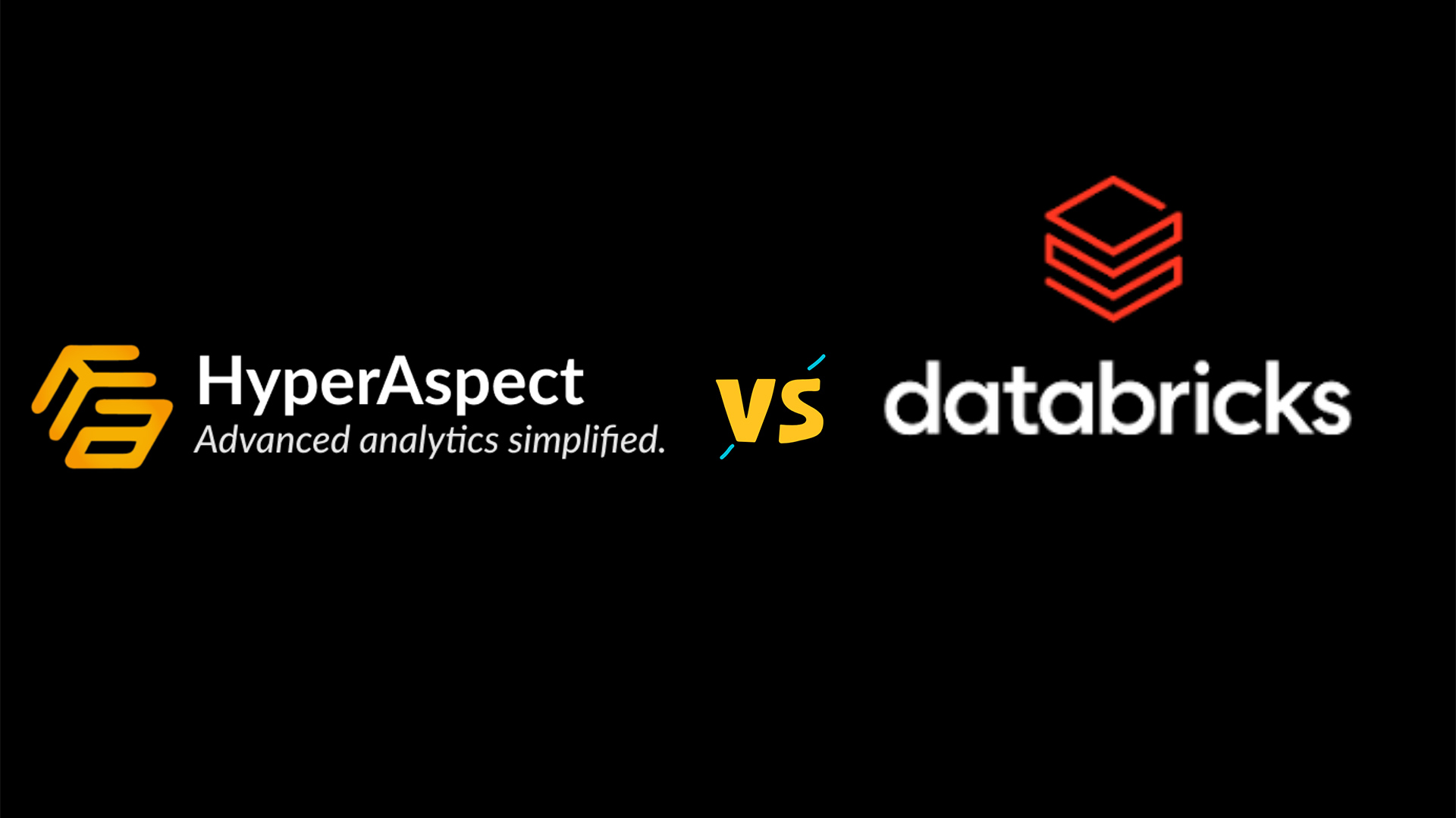Blog

HyperAspect Cognitive Cloud vs Databricks: A Step-by-Step Guide to Choosing The Right Platform
Navigating the landscape of AI analytics and business intelligence solutions can be daunting. With platforms like HyperAspect Cognitive Cloud (HACC) and Databricks leading the field, understanding their strengths and differences is essential. Both options deliver robust features, but the best choice depends on your business’s unique data needs, team expertise, and scalability requirements. In this guide, we’ll unravel their core functionalities and help you decide which platform aligns with your objectives.
Decoding the Decision Between AI Platforms
AI analytics platforms like HACC and Databricks offer transformative tools, but their focus and use cases differ significantly. Choosing the right one demands a close look at critical factors, including data processing requirements, architecture flexibility, ease of use, and cost structures. Whether you aim to streamline workflows with automation or need an advanced data engineering platform, this comparison will bring clarity to an otherwise complex decision-making process.
Step-by-Step Breakdown
1. Architecture and Core Purpose
How a platform is built and its focus area can make or break its ability to meet your needs.
- HyperAspect Cognitive Cloud: Built with a modular microservice architecture, HACC excels in business workflow automation and data productisation. It integrates machine learning (ML) and business intelligence (BI) to simplify complex processes, reducing the time to market for solutions. This modular approach ensures adaptability and scalability, particularly for mission-critical automation tasks.
- Databricks: Developed around Apache Spark, Databricks caters to data engineering, data science, and real-time analytics. Its unified platform supports everything from ETL pipelines to machine learning workflows, making it particularly valuable for teams working with massive datasets and engineering-heavy operations.
Key Takeaway
Choose HACC if your focus is on automation and seamless integrations of BI and ML. Opt for Databricks if you require a Spark-based architecture for advanced data engineering and high-performance data science.
2. Data Processing and Scalability
The way these platforms handle data types and their scalability options can dictate their suitability for your projects.
- HyperAspect Cognitive Cloud: HACC shines in handling heterogeneous, multi-modal data (structured, semi-structured, and unstructured) and integrates ML seamlessly. Its Kubernetes-based horizontal scaling ensures flexibility, enabling independent scaling of compute, memory, and storage resources. It enables businesses to optimise resource allocation for growing demands or evolving workloads.
- Databricks: Known for its Spark-driven architecture, Databricks manages unstructured data and complex ETL pipelines efficiently. It offers scalability through Spark clusters, making it a popular choice for companies working with high-volume big data or data lake implementations.
Key Takeaway
HACC is ideal for heterogeneous data streams requiring robust BI integration and modular scalability. Databricks, however, is better suited for high-performance real-time analytics and large-scale unstructured data processing.
3. Machine Learning Support and Ease of Use
AI platforms differ in their ML capabilities and how user-friendly they are for teams.
- HyperAspect Cognitive Cloud: Offers extensive support for multiple ML frameworks. It works seamlessly with both custom-developed models and pre-trained ones from libraries like Hugging Face. Its visual process design interface simplifies task orchestration, requiring only minimal scripting knowledge. This makes it especially appealing to teams that want an intuitive setup without sacrificing functionality.
- Databricks: Delivers native ML support and is well-regarded for its collaborative notebooks. It integrates popular ML libraries, but mastering it often requires a strong grasp of Apache Spark and distributed computing concepts. Databricks is more suited for technically advanced teams creating highly customised ML models.
Key Takeaway
HACC is a top choice for user-friendly machine learning tools and integrated workflows, while Databricks excels for technical users building bespoke ML pipelines with advanced customisation needs.
4. Cost Structure
Cost-effectiveness is a critical factor when adopting AI platforms, especially as business needs evolve.
- HyperAspect Cognitive Cloud: Boasts a flexible pricing model. Companies can opt for developer licenses for in-house deployments or usage-based pricing for SaaS solutions. This dual flexibility makes it practical for businesses scaling their operations or balancing upfront development costs with ongoing resource needs.
- Databricks: Offers pay-as-you-go and reserved pricing options for its clusters, tailored to specific use cases. However, continuously running clusters for machine learning or large-scale ETL tasks can cause costs to escalate unexpectedly, adding complexity to budgeting.
Key Takeaway
HACC offers transparent and adaptable pricing, making it a smart choice for businesses seeking cost predictability. Databricks suits organisations willing to trade off predictable costs for flexible, on-demand resources.
Common Misconceptions About Choosing AI Platforms
Here are some pitfalls to avoid when evaluating HACC vs. Databricks:
“One-size-fits-all” platforms
AI platforms aren’t interchangeable. For instance, HACC is tailored for automation-driven solutions, whereas Databricks focuses on engineering-heavy tasks.
“Higher cost guarantees better performance”
Costlier options don’t always deliver the best results. Instead, align the platform’s capabilities with your specific use case. HACC’s resource efficiency, for example, can reduce total costs despite its high level of customisation.
“Ease of use is irrelevant in technical platforms”
Even in technical teams, ease of use can significantly improve adoption rates, reduce errors, and save time.
Conclusion
Selecting between HyperAspect Cognitive Cloud and Databricks ultimately hinges on your organisation’s goals and team capabilities:
- Choose HACC if you need a versatile solution combining automation, ML integration, and cost-efficient scalability. Its intuitive design makes it an excellent fit for teams who want impactful results with minimal complexity.
- Opt for Databricks if your team excels in Spark-based technologies and demands a robust solution tailored for high-performance data engineering or real-time big data processing.
Both platforms are industry leaders, but aligning their strengths to your specific business needs is crucial. If you’d like to see how HyperAspect Cognitive Cloud can transform your workflows, book a demo via HyperAspect website or reach out to us at info@hyperaspect.com today.